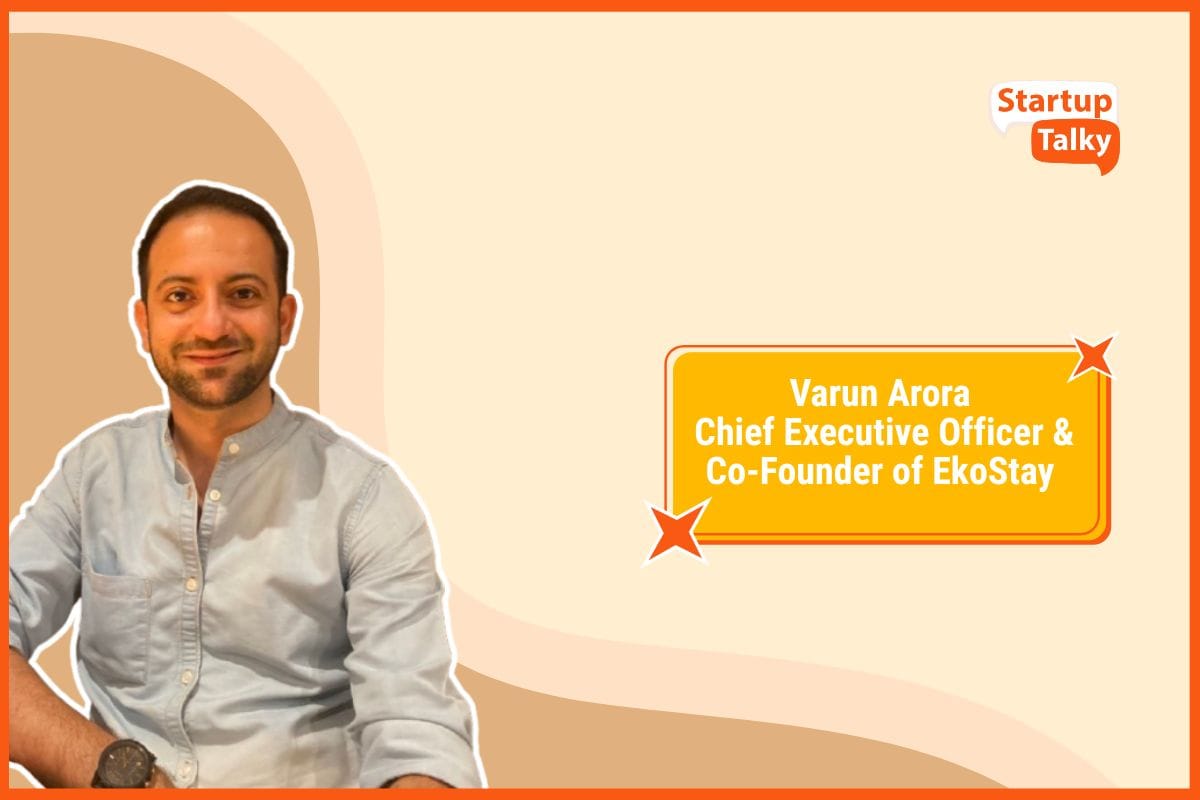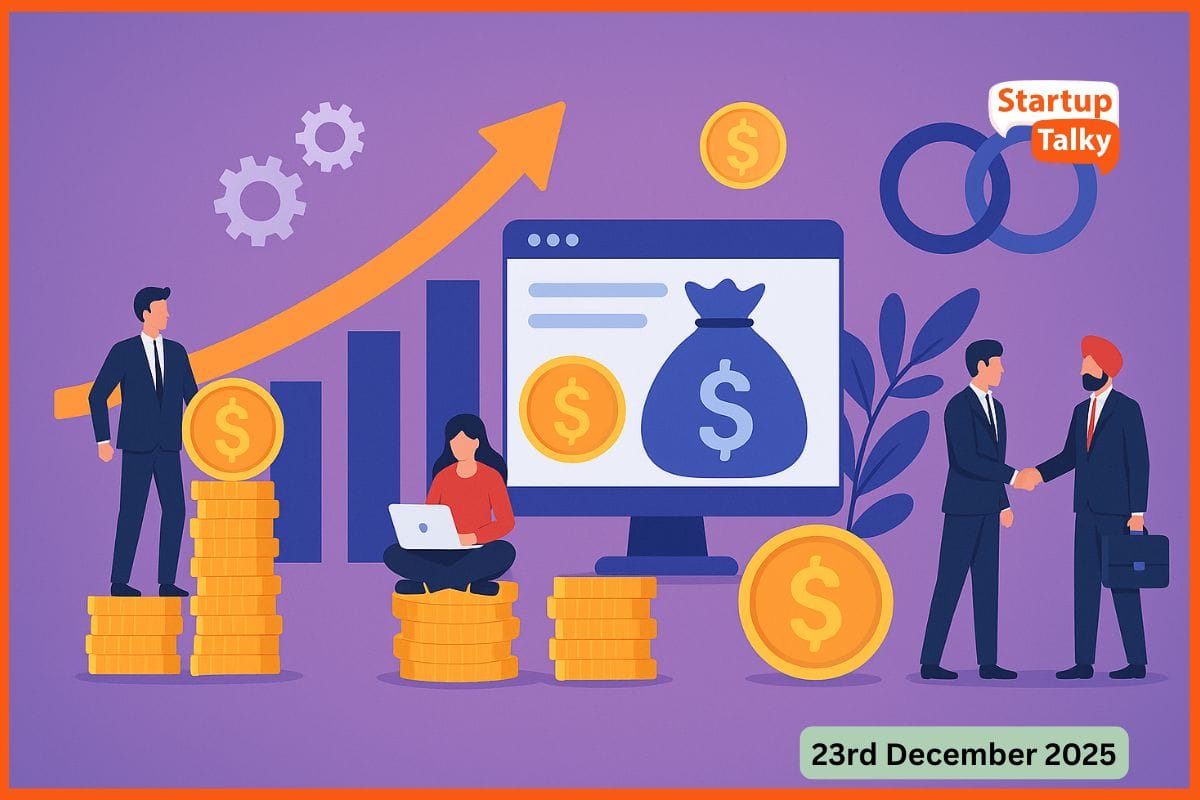How to Start B2B ABM Under a Scrappy Budget?
✍️ Opinions
This article has been contributed by Samyak Tripathi, Account Based Marketing Expert at Grux.digital.
ABM has become a category on its own in the last couple of years, a vast pool of tech, services, and communities have come into the picture,
It has evolved into a priority for anyone selling enterprise and mid-market tech.
Many marketers believe it to be a fluff narrative taken by software vendors while some see it as a new ‘channel’ to pump up their pipeline numbers.
Let’s dissect B2B ABM in 2024, one step at a time.
Why ABM? The Real Reason
The B2B Tech Marketing Landscape in 2024
Complex Enterprise Digital Footprints
Privacy Laws & Marketing Restrictions (Put on your Glasses for this one)
How to Get Started With ABM on a Low Budget?
- Getting Started with Target Account Lists
- Planning an ABM Strategy
- Creating a Relevant Measurement Plan
- A Workable Tech Stack
Why ABM? The Real Reason
You may have seen a lot of case studies on your social media feeds flashing ABM as the new way that fixes everything wrong with B2B marketing in the last decade.
Far away from narratives, a mix of market shifts and marketing constraints have led to the ABM wave…

The B2B Tech Marketing Landscape in 2024
ABM and SaaS go hand-in-hand and pretty much everything has been said about the SaaS funding winter already, just recapping the story here:
- 2020- Global SaaS Market secures $58.3 Billion in funds
- 2021- Investments rapidly shoot to $136 Billion (Woahh)
- 2022- The winter starts, SaaS raises $109 Billion globally
- 2023- Funding crunch, a drop of 33.3%, $72 Billion raised
On a similar trajectory,
- 2020- The Indian SaaS Market secures around $2.6 Billion in funds
- 2021- SaaS Investments climb to 170% with $4.5 Billion
- 2022- Registers all-time high bagging $6 Billion
- 2023- Investments take a steep drop of 68% to $1.3 Billion

Note, that SaaS revenues and valuations have still been predicted to grow steadily from 2025.
Why did I waste a minute to lay down the obvious?
So that we can clear this out right away:
- There are exponentially more alternatives in any software category today
- Marketers have less cash and time but need to ensure more bottom-line predictability
Complex Enterprise Digital Footprints
Enterprise Digital Footprints are becoming crazy (Yes, it’s more complicated than an eBook, Boss!)
While funds were skyrocketing during the pandemic, it is not alien to assume that people became increasingly active on different digital channels.
From Facebook and Twitter in 2019, most professionals acutely participate in professional communities, networks, and digital events and it is a core component of their decision-making.
A series of dozens of touchpoints, reviews, research, and interactions lead to an enterprise deal opening as opposed to being completely sales and brand-led like before.
Additionally, a big chunk of buyers are taking months longer to convert post the first sales touchpoint if we leave a minority share of ideal buyers aside.
Further on performance marketing, we have observed that scaling profitably is harder to achieve in 2024, thanks to increasing competition.

Inferring from this:
- Buying journeys are more complex, longer, and more spread out in 2024
- Complex digital footprints have enabled buyers to go through a lot more touchpoints before they even open a sales conversation
This means the B2B Lead Generation practices that worked great in 2020 like:
- Email Blasts and Nurtures
- Content syndication
- Blindly burning 6 to 7 figures on Google ads…do not cut it anymore!
We can also infer that since marketers need more predictability on bottom-line metrics…Content Marketing, SEO, and PR cannot be the sole contributors as they don’t provide the necessary proactivity on the “Who & How” of Enterprise B2B marketing.
Privacy Laws & Marketing Restrictions (Put on your Glasses for this one)
Among everything else, we are seeing:
- Gmail and Yahoo imposed strict restrictions on mass emailing this February.
- The consistent updates made by the iOS for user privacy.
- Google’s announcement to phase off 3rd party cookies completely this year.
Making it hard for marketers to target, track, and test things at scale.
Hence, there is less room to perform hundreds of tests for months on end to crack a workable message without knowing the intent, fit, and priority of a prospective buyer.
All in all, the spray-and-pray approach is harder to execute in 2024 because of less data, increasing buying complexity, constrained budgets, and general unpredictability in the market.

How to Get Started With ABM on a Low Budget?
Since we have covered the levers that have given rise to the ABM wave, let’s cover how you can get started with it under a scrappy budget.
You will need:
- A Target Account List
- An ABM Strategy
- A Relevant Measurement Plan
- A Workable Tech Stack
Getting Started with Target Account Lists
Any ABM program starts with a list. Here is how you create a list of high-intent and, ideal buyers.
- Go to CRM, and look at the Closed Won deals in the last year.
- Look at the Biggest converting deals last year.
- Analyze the fastest converting deals in the last year.
Next, filter these deals/customers by,
- Best Industries/Business Verticals
- Deal Size
- Tech Use Cases/Solution/Modules
- Stakeholders Involved along with their role
One could also go out of their way to do qualitative interviews with best performing Account Executives in Sales to uncover:
- If specific firmographics have been performing better or worse…why?
- Finding common objections of the deals on Hold or Lost at different deal stages vs Closed Won Deals.
- Are they observing any trends in the sales cycles of Closed Won vs Closed Lost Deals?
- Are there any other recent trends to look out for?
- When does a specific Stakeholder need to get involved in the buying process, and how to get them involved?
Now, after this exercise, you should know:
- [ ] Tier-1 Accounts, priority for the next quarter
- [ ] Tier-2 and Tier-3 Accounts, lower in priority…probably the next 2-4 quarters
Planning an ABM Strategy
There are a lot of complicated ABM methods out there, while I like to believe in simplicity.
Here is how I look at it:
- Warmup
- Accelerate
- Close
Ideally, every account in your target list goes through these three steps before closing or expanding to your product/service.

Ideally, an account would move from Tier-3 to Tier-1 as they engage with your marketing creatives.

Let’s take a look at some examples of these campaigns.
Account Warmup Programs
Now for Step 1 of your marketing programs, we need to activate/reactivate accounts by increasing brand awareness and triggering intent to buy among champion stakeholders.
- Personalized Value Propositions
- Event and webinar invitations
- Community Meetups
- Resources to promote downloads

Pipeline Acceleration Programs
Let’s say you have some accounts warmed up. Now, let’s make sure we enhance buying intent among champion buyers, bring in other influencers-budget holders of the buying committee and accelerate deal velocity.
- Personalized Social Proof for target accounts.
- Objection handling campaigns.
- Multi-threading campaigns to involve influencers early in the buying journey.
- Competitor Comparisons and Positioning.
- Campaigns to highlight ease of onboarding.

Relationship Building Programs
Marketing Programs to build further trust and relevance among decision-makers and key influencers.
This usually happens by inviting key stakeholders to participate in marketing activities like:
- Podcast-Webinar Guest Invitations
- LinkedIn Guest Invitations
- Dedicated Product Walkthroughs and Social Proof

Creating a Relevant Measurement Plan
Creating an account-based marketing measurement plan enables you to manage and communicate short and long-term expectations.
- North Star Metric- The core indicator of your ABM success, this could be…Closed Won Accounts, Qualified Pipeline Coverage, Average Deal Value.
- L1 Metrics- Metrics that lead your progress towards the north star. These could be deal velocity, account penetration, and activation.
- L2 Metrics- Metrics that you might have to start measuring week-by-week. These could be form submissions, event participants, or even target account impressions.

A Workable Tech Stack
There exists a $100K ABM Tech Stack, we’ll not go into that…
Let’s find a scrappy tech stack from a first principal basis.
To execute account-based marketing successfully, you need tech for:
- Account Research (To qualify accounts)
- Data Enrichment (To enrich accounts with excessive data on an account and prospect level)
- Personalization (To deliver account-based experiences)
- Data and Operations (To integrate multiple marketing channels seamlessly)
I have curated a list of tech that I love for all of these 4 purposes.

Where Can Things Get Messy?
We have talked a lot about being successful with ABM, let’s talk about what to look out for as Red Flags🚩
a) An Account Wishlist is not enough
The most common failure with ABM is that people stop targeting.
Let me explain, let’s say:
- You did research on CRM to prepare target account lists, or,
- You synced up with sales to get a ‘Wishlist of enterprise accounts’, and
- You start pushing a bunch of campaigns to activate those accounts.
The distinction between targeted marketing and account-based marketing should be clear…they are not the same.
While preparing an account list does allow you to be more proactive, it does not guarantee better results.
An ABM team needs to ensure that target accounts are segmented into both Tiers & Segments to ensure personalized account-based experiences and relevant messaging.
The team also needs to ensure that only accounts with great buying intent and fit get included in ABM programs.

b) Frequency in ABM is Critical
Marketing frequency is an essential element to define whether you have a solid ABM engine or not.
Frequency tells us if we are knocking on the door enough, it also gives benchmarks on the ideal time and budget for prospects to take a given action in the buying journey.
Most marketing teams have no idea of their frequency for a prospect over multiple channels, and how it impacts deal conversions.
Being aware of the winning ABM frequency is a superpower for any team!

c) Stress test ABM by Exploring New Marketing Channels
An ABM team should always be searching for personalized ways to reach potential buyers,
Limiting your ABM strategy to typical marketing channels like digital paid ads and emails could result in missed opportunities.
Laying down some phy-digital channels you could explore for ABM here:
- Paid Search (Google, Bing)
- Paid Social (LinkedIn, Meta)
- Emails
- Social Selling(Only for engaged accounts)
- Gifting (Digital+Physical)
- Direct Mail
- Events and Roundups (Virtual+Physical)
- Sponsorships and Promotional Partnerships(Podcasts, Newsletters, Communities)
- PR Articles(Super targeted)
- Programmatic and Display Ads

Final Words
BM can be a lot of things, but it’s not a hoax and it’s not a bedtime fairy tale to tell your boss. It doesn’t need to cost $100K and could be executed under a scrappy budget if you know how to stitch the pieces together.
Thanks for reading, cheers!✌

Must have tools for startups - Recommended by StartupTalky
- Convert Visitors into Leads- SeizeLead
- Website Builder SquareSpace
- Manage your business Smoothly Google Business Suite





